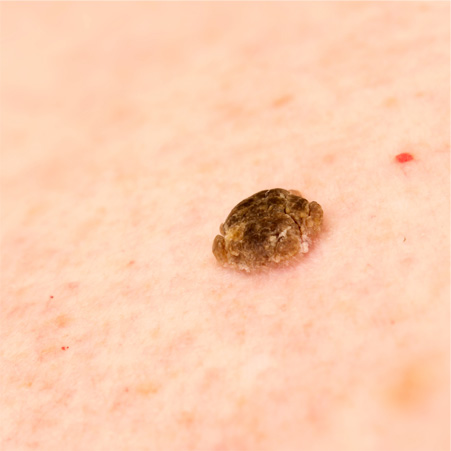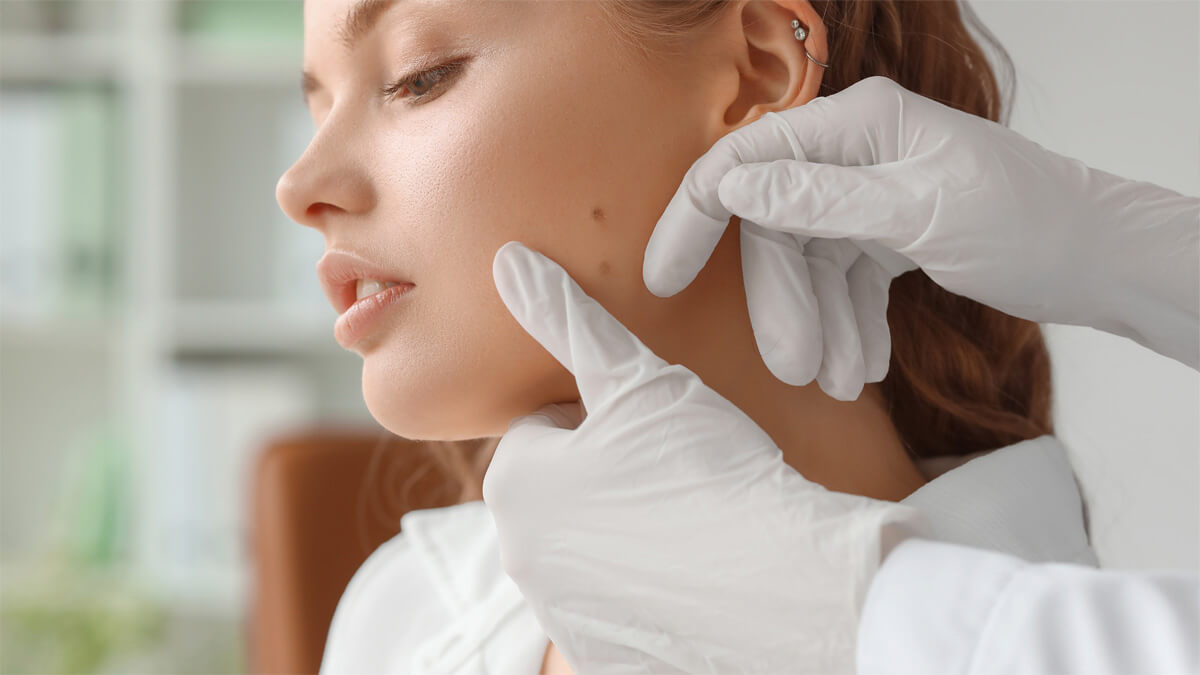Seborrheic
Karatosis

-
Description
A noncancerous skin growth that is usually light tan, brown, or black. The growth can appear to look scaly, waxy, and/or slightly raised. Seborrheic Keratosis can grow on the back, neck, chest, and head.
-
Cause
Seborrheic keratosis, a common non-cancerous skin growth, develops due to the proliferation of keratinocytes, the predominant cell type in the outer layer of the skin. While the precise cause is unclear, factors such as aging, sun exposure, and genetics are believed to play significant roles in their formation. These growths typically appear as wart-like or stuck-on lesions with varying colors, textures, and sizes, often increasing in frequency with age.
-
Treatment
Treatment for seborrheic keratosis is usually not necessary unless the growths become bothersome or for cosmetic reasons. If removal is desired, options include cryotherapy (freezing), curettage (scraping), electrocautery (burning), or laser therapy. However, it's important to consult a dermatologist for proper evaluation and recommendation of the most suitable treatment approach.



